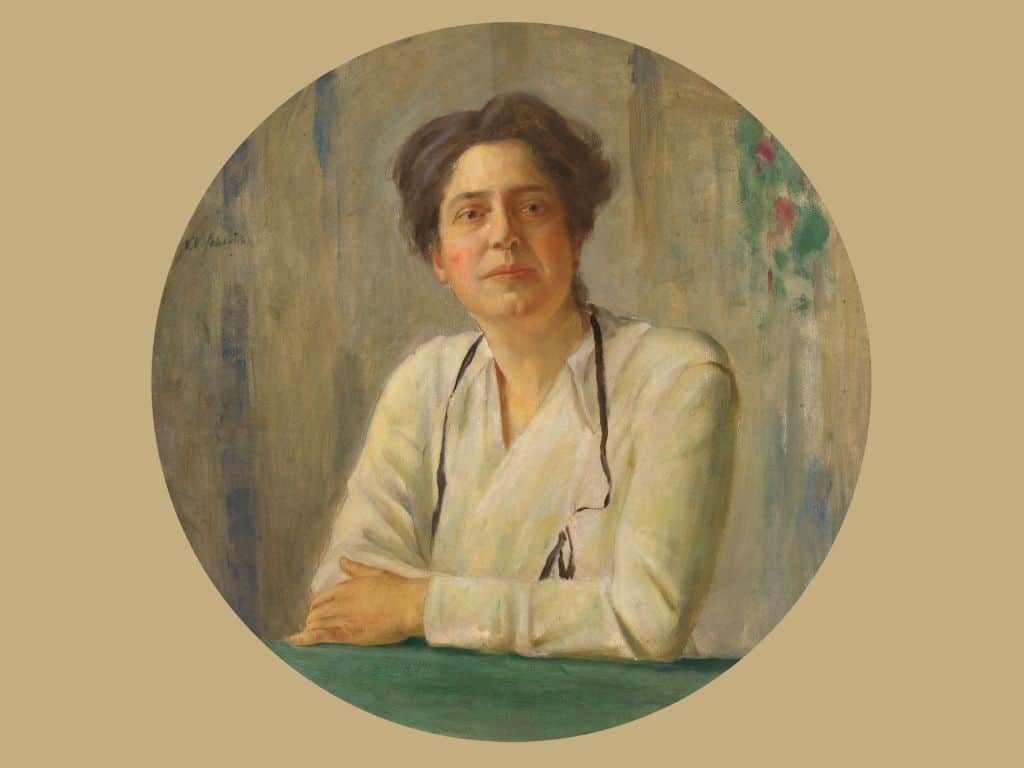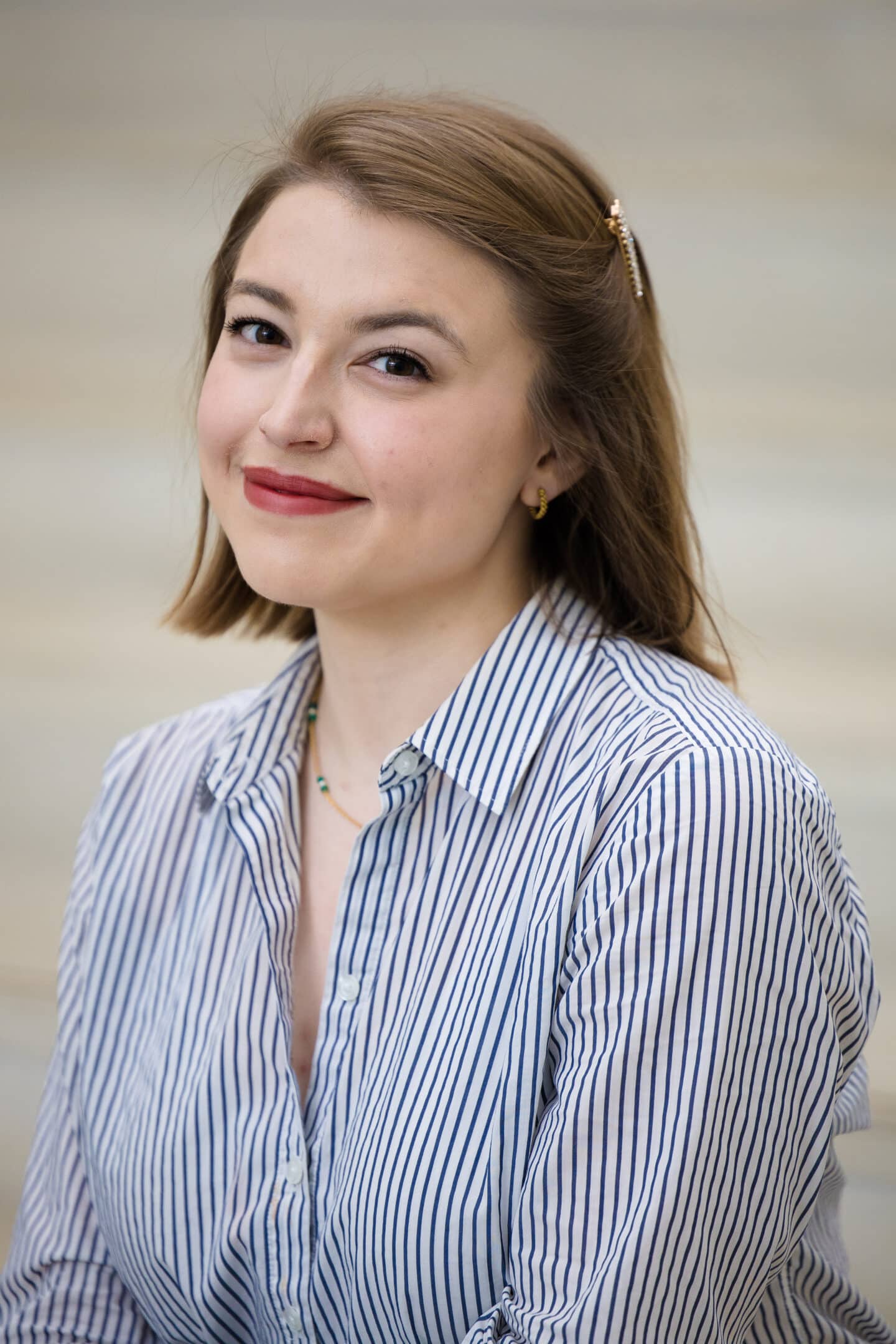Blog Post
Nurse, activist and diplomat: The international relations of Lillian Wald
We're grateful to Isabella Turilli (2023) for writing this blog in honour of International Women's Day. A second-year student pursuing an MPhil in International Relations, she is interested in the intellectual history of international relations, examining whose thought and practice has shaped our modern understanding of the world.

The protagonists of international relations, according to stereotype, tend to fit a certain profile. Diplomats are smooth-talking and well-dressed. They were educated at some elite institution, in some similarly elite discipline like political science or law. Their days are spent in heated debates in opulent conference rooms, or on long-haul flights jetting around the world. And overwhelmingly, these diplomats – or at least the image we have of them – are men.
But to think that international relations is the domain of diplomats, or even only the domain of men, is not only unfair – history tells us it is untrue.
My research centers on Lillian Wald, an American nurse working in New York City in the early twentieth century. Despite having been well-known and influential in her day, she is not remembered as widely as some of her contemporaries, like social reformer Jane Addams or civil rights campaigner Ida B Wells. Though she may have taken a backseat in our historical memory, Wald’s life and work tell an important and much-needed story about the contribution of women and other marginalised communities to international relations. These contributions often came in novel and unexpected forms, but it renders them no less significant to the development of the world as we know it today.
Wald is best remembered as the pioneer of public health nursing. When she began her career in the early 1890s, a nurse could pursue one of two paths, working either in a hospital as the obedient assistant to the physician, or in a private household as a health aid for those who could afford round-the-clock care. Wald, however, originated a third option. The role of the “visiting nurse,” as the public health nurse was first known, was premised on the importance of the patient over provider. Instead of expecting sick, weak and poor patients to seek out a clinic or hospital, this type of nurse would attend to her patients in their homes. In doing so, she was doing more than tending to a wound or administering a medication – she was teaching her patients how to lead a healthy life. Visiting nurses showed mothers how to care for newborns, monitored infectious diseases in children and taught communities about proper hygiene.
Wald began nursing in this style after what she herself termed a “baptism by fire.”[1] Having graduated nursing school and now pursuing a medical degree, she had agreed to volunteer her time teaching a health class to local mothers in the tenement district. During her class, a child came up to her, begging her to help her ailing mother. When Wald followed the child through the “past evil-smelling, uncovered garbage cans…up into a rear tenement…and finally into the sickroom,” she found a woman laid “on a wretched, unclean bed, soiled with a haemorrhage two days old.” [2] So moved was she by the plight of this family – and in full recognition that they were not the only ones suffering in such conditions – Wald dropped out of medical school. Within a few days of abandoning her studies, she and fellow student Mary Brewster set about establishing a settlement house in which nurses could live and work in the communities that needed them most. Thus Wald’s project, the Henry Street Settlement on New York’s Lower East side, came to fruition.
The Visiting Nurses Service, based out of the Henry Street Settlement, grew to be an enormous success. By 1935, the service operated out of at least five other settlement houses across the city, in several local charities, a purpose-build clinic on the Upper East Side, and a hospital.[3] Yet the question still stands: how did being a pioneering nurse make her a diplomat? Economist and then-director of the Women’s Bureau of the American Department of Labor Mary Dublin Keyserling answered this very question in 1965: “in organizing the first independent public health nursing service…[Lillian Wald] started a worldwide movement of immense significance.”[4]
Wald’s public health nursing took the spotlight properly during the twin crises of the First World War and the 1918 Influenza Pandemic. Suddenly these jack-of-all-trades nurses, who could bandage a bullet hole but also manage the spread of disease in army cantonments, became “more precious than great stores of gold.”[5]
The Henry Street workers thus became the world’s model of this new kind of nurse. Trainees flocked from all over to learn about public health nursing and bring it back to their home countries. Young women from the “China and Japan, the Scandinavian countries, Palestine, Russia, Siberia, Mexico and other lands” called upon Wald and her colleagues to become proficient in this new, impactful style of care.[6]
Now recognised as an expert thanks to her nursing work, Wald was also drawn into other important debates. She spoke at the White House in front of President Roosevelt on child labor[7]; she served on the mayoral immigration committee in New York as early as 1909[8], and she was a founding member of the League of Red Cross Societies and the Women’s International League for Peace and Freedom.[9] She campaigned fiercely for women’s suffrage and anti-militarism. Some of the first meetings of the National Association for the Advancement of Colored People (NAACP) were held at Henry Street under her blessing. So recognised was she for her work outside of the nursing, and outside of the United States, that one New Yorker reminisced that “we do not think of her as a great nurse, but as a great statesman.”[10]
Although Wald was “just a nurse,” the reform she ushered in across the world puts her contributions squarely in the arena of international relations. The fact that she does not fit our modern mold of “diplomat” suggests we ought to reexamine our own thinking. Global change need not be enacted by one type of individual, and Wald herself understood this as a core part of her work. In her 1934 book, she writes,
“And we on Henry Street have become internationalists, not through the written word or through abstract theses, but because we have found that the problems of one set of people are essentially the problems of all.”[11]
In this unconventional and unexpected way, Lillian Wald was a diplomat in her own right. It is my sincere hope that we seek out more figures like Wald to expand our vision of international relations – whether their stories are buried in archives or still unfolding today.
[1] Lillian D. Wald, The House on Henry Street (Milton: Taylor & Francis Group, 1915), 7.
[2] Lillian D. Wald, The House on Henry Street (Milton: Taylor & Francis Group, 1915), 5–6.
[3] Albert J. (Albert Joseph) Kennedy et al., Social Settlements in New York City : Their Activities, Policies, and Administration, Half-Title: Studies of the Research Bureau of the Welfare Council, No. 2 (New York: Published for the Welfare Council of New York City by Columbia University Press, 1935), 379.
[4] Memorandum in support of the candidacy of Lillian Wald of Henry Street for admission to the Hall of Fame for Great Americans, (April 1965). Lillian D. Wald papers, 1889-1957, Box 42, Folder 2, Manuscripts and Archives Division, The New York Public Library, New York, NY (hereafter cited as Memorandum, Lillian D. Wald papers).
[5] Typescript of article beginning “Before the war is over,” (1918), Lillian D. Wald papers, 1889-1957, Box 45, Folder 3, Manuscripts and Archives Division, The New York Public Library, New York, NY
[6] Lillian D. Wald, Windows on Henry Street (Massachusetts: Little, Brown, and company, 1934, 1934), 77.
[7] Program for Conference on Federal Children's Bureau, (25 December 1908), Lillian D. Wald papers, 1889-1957, Box 46, Folder 2, Manuscripts and Archives Division, The New York Public Library, New York, NY
[8] Article "Women and the New York Constitutional Convention" published in The Outlook, (1 August 1914), Lillian D. Wald papers, 1889-1957, Box 46, Folder 5, Manuscripts and Archives Division, The New York Public Library, New York, NY
[9] “An Outline History of the Women's International League of Peace and Freedom,” (1922), Box 47, Folder 5. , Manuscripts and Archives Division, The New York Public Library, New York, NY
[10] Memorandum, Lillian D. Wald papers
[11] Lillian D. Wald, Windows on Henry Street (Massachusetts: Little, Brown, and Company, 1934), 337.

